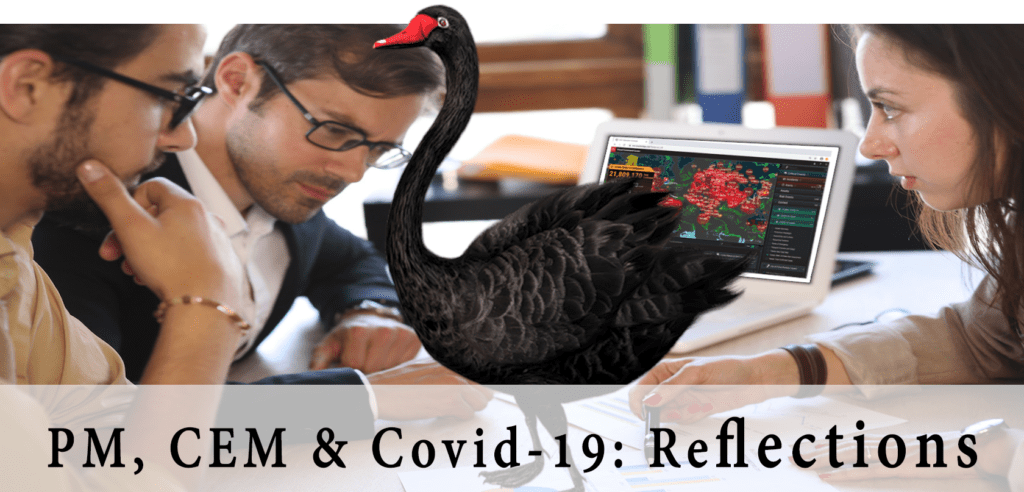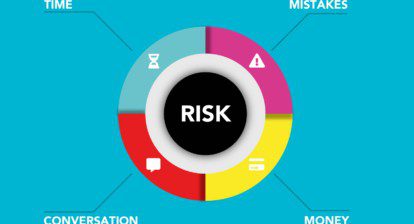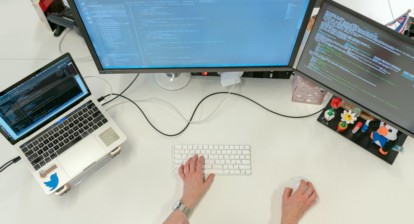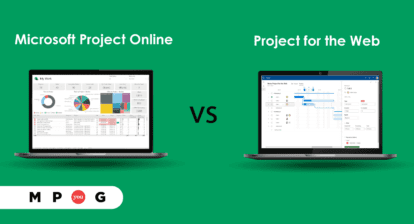In my previous article, PM, CEM, and Covid-19: Reflections – Part 1, we left off discussing project management, a pandemic, and Critical Event Management—the perfect storm for one whopper of a lingering challenge. From within the eye of this storm, I hope to bring a bit more insight into the situation that we all find ourselves in today; that of, looking for management solutions and ways forward.
Before returning to our interview with Claudia Dent, Senior VP of Product Marketing @ Everbridge (we were discussing her company’s efforts at combining AI with CEM), I wanted to make a few observations regarding remote work during the age of Covid-19. I’ll begin with the status here in my own household.
- I can’t imagine what remote workers are going through right now, but as I overhear my wife’s zoom call meetings from two floors away, I am starting to get the picture of what life must be like for so many managers and their teams. My entire family is now intimately aware of the corporate world during a crisis—even the cat is on edge from these endless zoom debates and emergency rings.
- The stress of 2020’s rapid change of workflow and environment is jarring, and employee emotions are running high as many struggle to communicate and produce while physically disconnected from their offices, all while tethered at the hip to devices that incessantly ping and ding with 24×7 notifications.
- Jes, my stressed-out spouse, is struggling with her planning duties within a multi-national enterprise. She is someone in charge of administering such sweeping changes such as hundreds of staff members going from working in offices to working in their bedrooms. From what I gather, this abrupt transition from office to home work is technically working, but generating enough friction within the enterprise to wear down steel.
- The friction being generated needs to be addressed, before burn-out ensues. One way that this friction is being done at Jes’s enterprise, is by the implementation of an inward focused management. They are trying to apply a compassionate, more relaxed approach to deadlines and reaching milestones, as well as roll out new plans to ensure employee well-being.
- The work-life balance of employees has flipped during Covid-19, so internal programs and previously well-working encouragements have changed. If they haven’t, they need to. For example, instead of staff needing to get out of the office and have more family time, employees now need to find more work time away from their families. Folks have to figure out ways to productively work amid all the wonderful distractions of family life—a reversal of the pendulum if you will!
I’ve listed just a few of my own observations, but as you may recall from Part 1, we posted a survey to find out how PMs-at-large are coping. 75% of survey participants identified as experienced project managers of 10 years or more:
- Over 90% of respondents replied that they had risk mitigation measures in place before the pandemic hit, but just 50% said those measures were actually activated.
- Examples of risk mitigation measures taken clustered around initiating work-at-home programs, limiting work hours in the office, and the implementation of PPE and social distancing at the office. One PM commented that their PMO had put everything on hold for the moment.
- When asked if risk mitigation measures taken were successful or not, 2/3rds replied yes, while 1/3rd of respondents were not sure if measures were working or not.
- When asked if risk mitigation measures were fully funded, 17% said nay, while a few were unsure if efforts were funded or not.
- When polled about whether efforts/responses to the pandemic were prompt and efficient, the breakdown was about the same; most respondent’s efforts are going well, while a few said efforts are not on track, and still, 25% were not sure.
- When asked if critical plan inputs (staff, materials, etc.) were identified in the plan beforehand, again the breakdown was similar, most responding in the positive, a few negatives, and 25% not knowing one way or another.
- When asked if any project-plan simulations/drills had been run before the swan struck, less than 10% said they had drilled, while everyone else did not, with most indicating that they wish they had.
- So far, PMs are reporting that the overall impact on plans-in-motion is serious, with only 8% seeing no Covid-related impact on projects, and the rest seeing either major and/or significant impacts playing out within their ongoing plans.
- Resources and costs are being impacted more than changes in the planning schedule, with workforce outages playing a part. Perhaps this reveals a ray of light; it certainly indicates that despite the impacts, schedules are being maintained to some degree.
- The overall mental health of responding PMs; however, did not appear good. In fact, 2/3rds of folks reported they are either going nuts or stressed in some way.
- In contrast, the overall physical health of PMs seems better, with 2/3rds indicating they are healthy, and only 8% reporting that everyone is down.
When asked about lessons learned so far, several interesting observations were noted:
“Keep an open dialogue with all stakeholders. Listen, and if you can help them plan, do it!“
“Go slow; be patient.“
“Anything can happen–yet everything can be addressed.“
“Never take anything for granted.“
“Good planning is not about doing the impossible, but about doing the possible in an impossible situation.“
Noting the last lesson, let’s assume for a moment that software, the all-saving grace of modern business, can help turn the impossible into something more manageable. Some software suggestions from participating PMs came in as follows:
- The obligatory suite of Zoom-like communication tools
- Tools that focus on refining a WBS and recording milestones
- Microsoft Teams and other online workspace tools
- Of course, our beloved MSP and Project Plan 365
What I found striking about these mentions, is that they are all traditional tools used during traditional times—times unlike those in which we find ourselves today. In addition, based on the results so far in the survey, one can conclude that while our actual schedules may be fine as they stand, our mindsets are in a state of chaos no one can predict what’s coming next.
Like the airlines, it seems we planners are in a global holding pattern, focusing inward for the moment, waiting for the next bomb to drop, and maintaining our plans accordingly. I can’t help but wonder, where our own version of an Early Warning and Control System (AWACS), such as found in most commercial and military aviation today, is?
It seems to me we need to better detect the inevitable unknowables on the horizon. Perhaps highly sensitive fuselage-mounted radomes attached to our risk mitigation plans? An aircraft radome allows for critical event signals to register within an onboard computer (from sources outside the plane), and for corrective action to be automatically taken, before disaster strikes. If we’ve learned nothing else, it seems we now can see we need for that aspect in our planning methodology!
Expert Opinion
We humans refuse to deal in advance with Black Swan events, arguing that these scenarios are too expensive and rare to plan for, even if the ultimate cost to humanity is extinction.
However, lots of money is spent on AI when computing the probabilities of an alien invasion, or the current size and makeup of the known Universe.
Sorin Fiscu, CEO
Housatonic Software
(makers of Project Plan 365)
We are led back, uncomfortably perhaps, to Part 1 of this article, and the question of whether or not artificial intelligence (AI) can be deployed as our virtual radome serving our enterprise planning systems. Additionally, we might ask how to effectively use algorithms to sort out problems not yet registering on our PM radars. Here is more of what Claudia Dent of Everbridge has to say on the possibility of AI becoming our planning radome of choice.
Q. Claudia, can AI save us?
A. First we need to save ourselves by following safe Covid-19 protocols. And, let’s add an effective vaccine into the mix! Seriously, AI brings significant breakthroughs to almost every discipline we can imagine across life sciences, engineering, and technology. AI is being used today to accelerate the development of vaccines, treatments, and testing methods. Just as in all of these use cases, AI can only be successful if the underlying foundation is solid. It’s the same for Critical Event Management—the possibilities are endless for AI including historic analysis, understanding of what and why something has happened, and predictive analysis to provide foresight for better preparation and resolution guidance.
Q. In your words, what is CEM, and what is your company doing with it?
A. CEM, Critical Event Management, is the ability to automate your response to any critical event that impacts your business whether it be a natural disaster, active shooter, major system failure, and yes, a disease outbreak. The ultimate goal is to respond quickly to save lives and keep businesses running. Many organizations have detailed emergency preparedness programs and up-to-date business continuity plans, but with an increasingly complex and unpredictable threat environment, it has never been more imperative to act faster. Often these plans are “static” and rely on a number of disjointed silos and systems to execute resolutions. Furthermore, they do not account for compounding events such as a hurricane or cyclone impacting in an area already under coronavirus quarantine. Everbridge’s CEM solution provides an automated platform covering the full Critical Event Management lifecycle. With more complete intelligence, you’ll be able to increase your speed and decisiveness in order to assess risks and prevent them from harming your people or disrupting your operations. Amplifying ad hoc data feeds to provide richer intelligence and correlating threats with locations of assets and people, ensures more rapid and comprehensive incident assessment and remediation.
Q. Can MSP data (.mpp files) be incorporated into the Everbridge early warning systems in order to help planners see evolving critical events world-wide and allow for adjustment of plans accordingly?
A. Yes, the data can be overlayed onto our dashboard systems, giving planners insight into how evolving events correlate to task information and overall scheduling. Everbridge has the ability to manage dynamic task lists during a critical event. The starting point for these task lists can be imported from other tools via our open platform.
Note: To see a demo of Everbridge AI solutions including MSP integration, watch the on-demand MPUG webinar.
Q. What new skills and tools do PMs have to have to properly perform CEM?
A. As I see it, there are four skills and areas of focus required to dive into this brave new world.
BUILD PARTNERSHIPS WITH LEADERSHIP
Critical events can impact different areas of business, and often impact more than one. Building alliances with your leadership is essential. These may include the Chief Security Officer (CSO), Chief Information Security Officer (CISO), and Chief Information Officer (CIO). This is dependent on your organization somewhat, but regardless, combining the experience, insights, and intelligence from across the organization makes it possible to quickly understand the root cause of an event and ensure a rapid response and operational continuity.
ASSESS YOUR SOURCES OF INFORMATION
It’s time to pull all of your risk information together into one place and streamline your threat assessment process. Align sources and information, and evaluate the risks and the impact to your organization across five key asset types: People, Buildings, IT Systems, Supply Chain, and Brand/Reputation. Your data sources should be vetted and verified, involving geo-targeted intelligence related to weather, terrorism, and other potential disruptions. Verified sources and analysis eliminate the noise and enable you to generate the most impactful information while eliminating false positives.
IDENTIFY AND LOCATE CRITICAL ASSETS
During every event, a resilient organization will know where employees, travelers, visitors, offices, manufacturing facilities, and other critical assets are located. It’s also critical to know how they are interconnected and the dependencies between them. Beyond knowing the location and interdependencies, organizations also need an idea of how much it will cost if these assets are impacted by an event. For instance, perhaps a critical business application goes down resulting in thousands of dollars in losses every minute. It’s important to calculate losses based on the overall use case, such as how many employees are going to be impacted.
QUANTIFY AND ANALYZE RISK
It is critical to determine what is critical and what isn’t. Answer the big question: “What is the impact and exposure?” An effective approach is to differentiate between threats and risks across the board and to then quantify risk based on the threat, the threat’s nature, the organization’s overall vulnerability or exposure, the overall impact, which may go beyond the immediate assets, people, and the overall timeline, which is often dynamic. For instance, it’s not sufficient to ask, “How many employees are in HQ right now?” since employees are constantly on the move. Perhaps a geopolitical issue or event is going to cause a disruption to the supply chain, but the organization won’t feel the impact for two months.
Q. Is there anything else you would like to tell the PM community?
A. We are entering a new age and taking automation of critical event response to a whole new level. Look for opportunities in your own areas of Project Management where rapid response to an event can have a marked business advantage to keeping your projects on track. Also, I wish you and your families safety during these times.
I’d like to express my thanks to Claudia for her time and interest in Project Management during this difficult environment. In conclusion of this ongoing reflection and in order to support ourselves as planners during these trying times, let’s say that the party is not yet over. Whether that be a more detailed discussion of AI solutions, new employee wellness plans, or more, a nature of fostering our valuable resources (people), will do us all well as we plan ahead for current and future swan attacks.
One way to continue this reflection, is to join me, along with Claudia and other industry experts, to further discuss what can be done with AI—now and into the future. We hosted an MPUG webinar (available on-demand) for just this reason and hope you’ll watch. Additionally, hit the comments below to let us know your take. I’ll be sure to reply. Until then, safe and healthy planning to you all!
Check out Part 1 of this article








